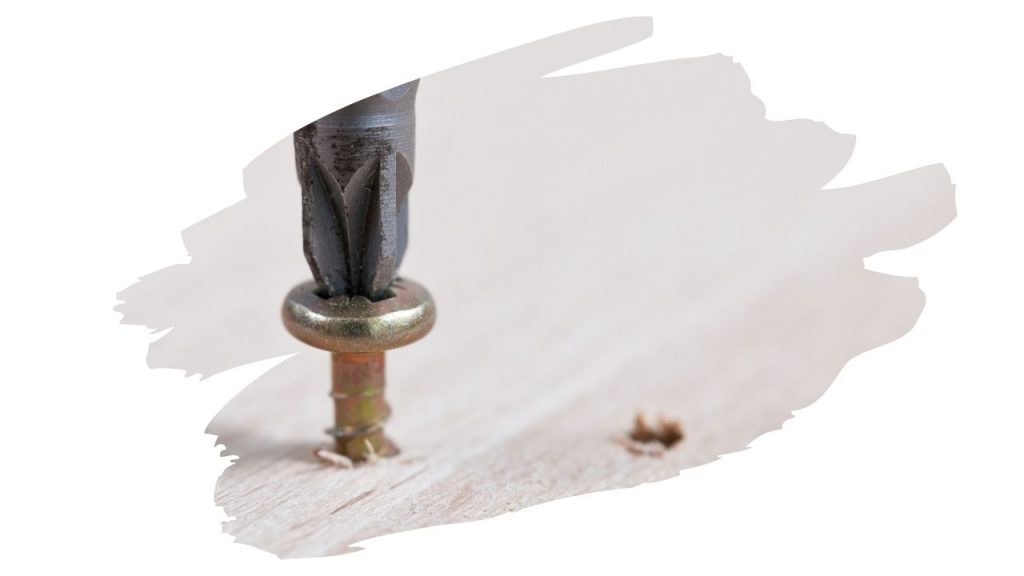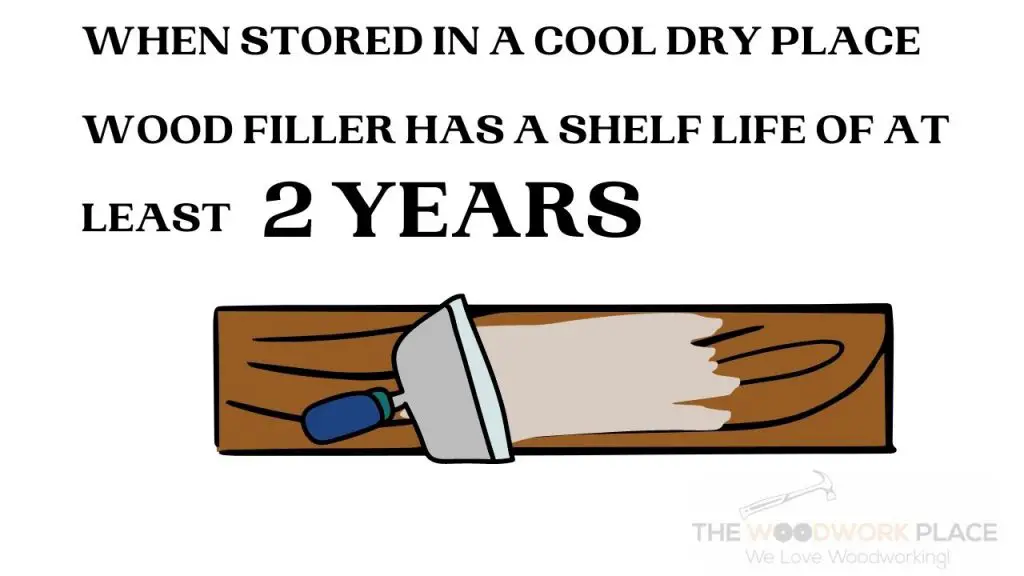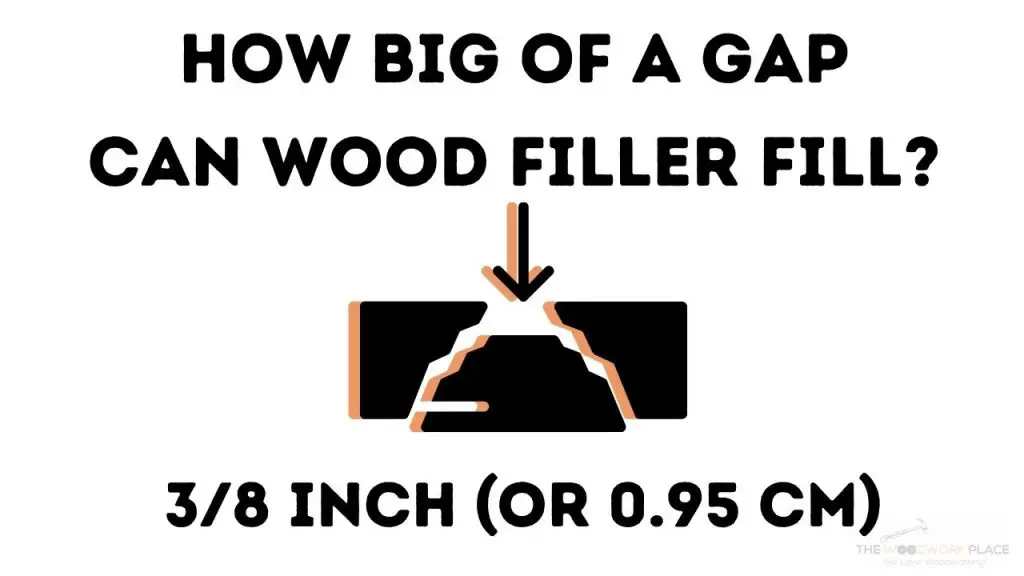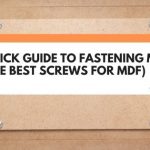Even the most perfect wooden work crafts will need a bit of repair. When it comes to wood, cracks and splits can often show up where you least expect them.
This is why wood fillers are as popular as they are today. Wood fillers are great at masking imperfections and blemishes. You can even stain, sand, and screw into wood filler too.
But with all of the different types of fillers on the market, what wood fillers can you screw into?
The best wood filler you can screw into is any filler made from epoxy. Any quality epoxy wood filler can be sanded, painted over or drilled into. However, you will need to create a pilot hole before you begin screwing into epoxy.
Still, screwing into epoxy is one thing, but will those screws really stay in place? And can epoxy hold them up under load bearing pressure? Just keep reading to find out…

This post may contain affiliate links to products that we receive a commission for (at no additional cost to you). Learn more here.
Can You Screw Into Wood Epoxy?
Yes, screwing into this hard setting wood filler isn’t an issue. However, you need to be on the lookout for a couple of possible problems with this type of wood filler:
Air Bubbles: Why They Can Cause Problems
You need to be careful with ‘air bubble’ issues.
You see, as the epoxy sets, air bubbles can get trapped inside the resin. Once air bubble filled epoxy has set – if you then tried to turn screws into it, those screws won’t hold on very well.
So when using this wood filler, (before the epoxy begins to set), pat down the resin to release any trapped air bubbles. This way you can be sure that when the epoxy hardens, there are few (if any) bubbles still trapped underneath.
Related Post: Can You Apply Epoxy Over Shellac? (3 Key Things You Need To Know)
Pilot Holes: The Type Of Screws You Are Using Matters
Lately, with the wide availability of self tapping screws and drilling screws, creating pilot holes feels a bit unnecessary.
Pilot holes are those small pre-drilled holes we create in wood to make it easier to drive screws into lumber.

Self-Tapping Screws
Self-tapping screws have small notches designed to make it easy to tap a hole into soft woods. So when you use self-tapping screws on soft wood types, you won’t need to create a pilot hole.
Self-Drilling Screws
Self-drilling screws, on the other hand, are designed to take on more sturdy hardwoods. Which is especially helpful if you have trouble getting screws to stay in wood. In fact, we’ve written a blog post all about what you should do when wood screws simply won’t tighten and stay fixed. You can click here to read it right now on The Woodwork Place.
Now, not only can self-drilling screws handle tough lumber, they can even be drilled – pilot hole free – into metal. They are able to do this because they have a drill-bit-styled tip that can carve into material without the requirement of a pilot hole.
Now, having said all that, epoxy is an incredibly hard substance once it sets. This wood filler type is famous for being incredibly tough and holds up well against wear and tear.
So when it comes to drilling self-tapping screws into epoxy wood filler, you will need to create a pilot hole first. But, if you are using self-drilling screws, then they should still be able to screw into hard epoxy resin without a pilot hole.

But Can Epoxy Really Hold Screws Well?
Now that we know that epoxy can be screwed into, it begs the question; is it any good at really at doing the job of holding onto those screws?
Well, it depends on the size of the job. If those screws are going to be the linchpin of a heavy load – like say for example, door hinges – then wood filler won’t be able to hold onto that. Epoxy wood fillers may crumble under the weight of trying to keep a hefty door up.
But when it comes to smaller or lighter load bearing jobs, epoxy wood filler works great at easily holding screws well.
Still, epoxy has its advantages – one big one being that it still has a little bit of elasticity even after it has cured. And having a wood filler that can offer a little bit of give is really important when it comes to wood.
You see, wood likes to breathe. Even long after that lumber has been cut down, planed, sanded, and repurposed into a crafts, it still likes to move around.
Wood expands and shrinks due to changes in temperature. And even a little moisture in the air – such as say on a humid day – can cause wood to shift around. In extremely high humidity environments, even solid wooden doors can twist right off their hinges.
To tell you the truth, warping doors are a pretty common problem. Which is why we wrote an article all about what actions you can take to fix those warping issues. Simply click here to check out our post: ‘What To Do When Solid Wood Cabinet Doors Start Warping’.
So, to sum up, as wood moves an epoxy wood filler can move along with it. And that helps reduce the chances of cracks appearing in wood filler.

Can You Screw Into Bondo?
Yes, you can screw into Bondo wood filler. It’s a decent wood filler for appearances sake; you can paint over it, sand it, and it can even take on stain.
But, in my opinion, this wood filler type isn’t as strong and tough as its epoxy counterpart.
Related Post: Is There A Food Safe Wood Filler?
Will Elmer’s Wood Filler Hold Screws?
Actually driving screws into Elmer’s wood filler shouldn’t be a problem. Although you may find that it doesn’t hold screws as well as Epoxy or even Bondo wood filler.
If you are going to opt for Elmer’s make sure you give it time to dry and cure fully before you go grab that screw driver.
How long it takes for this wood filler to dry depends on your local weather temperature and humidity levels. But, whilst it can take as little as a few hours to dry, give it up to 48 hours to be sure it has cured.
Final Thoughts
An epoxy filler is your best wood filler option for holding screws. And using it shouldn’t prevent you from being able to put screws into this wood filler type. Just be sure that you;
- Make sure the epoxy wood filler is free of air bubbles as it sets.
- Create a pilot hole to guide the screw (even if you are using self-tapping screws).
- And keep in mind that any wood filler may crack if those screws are holding up a heavy load.


